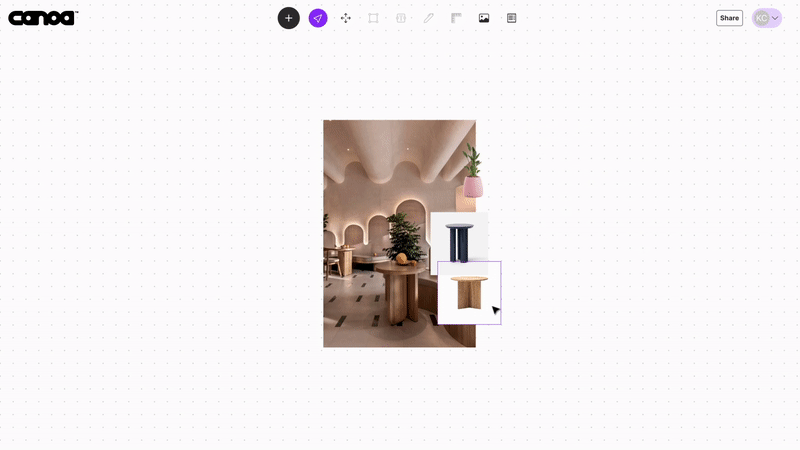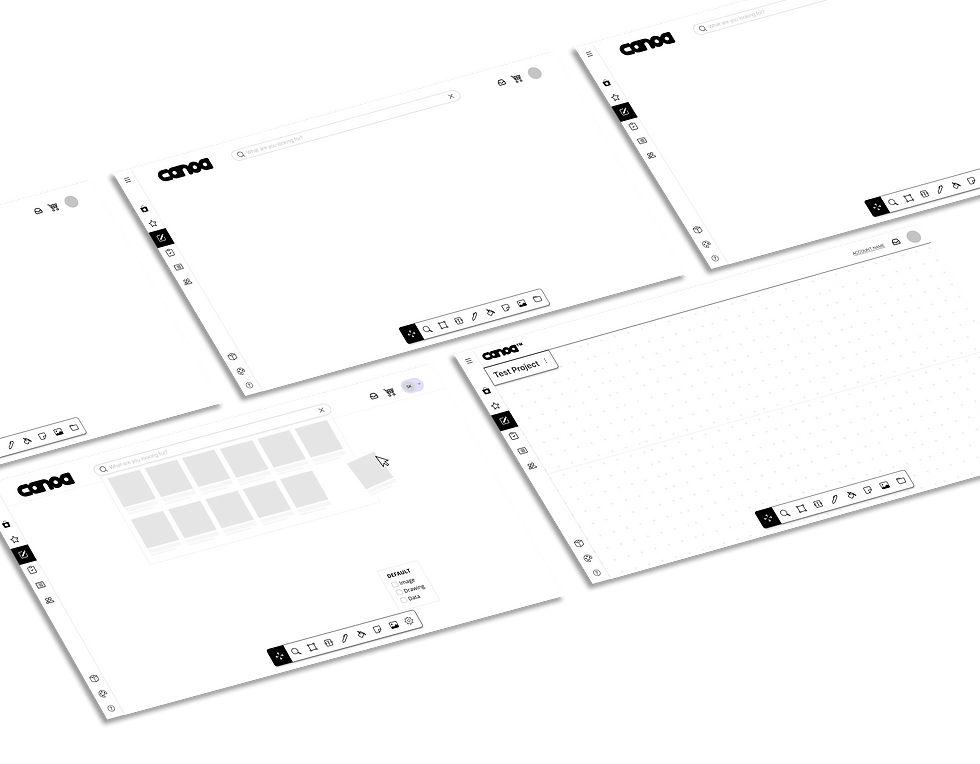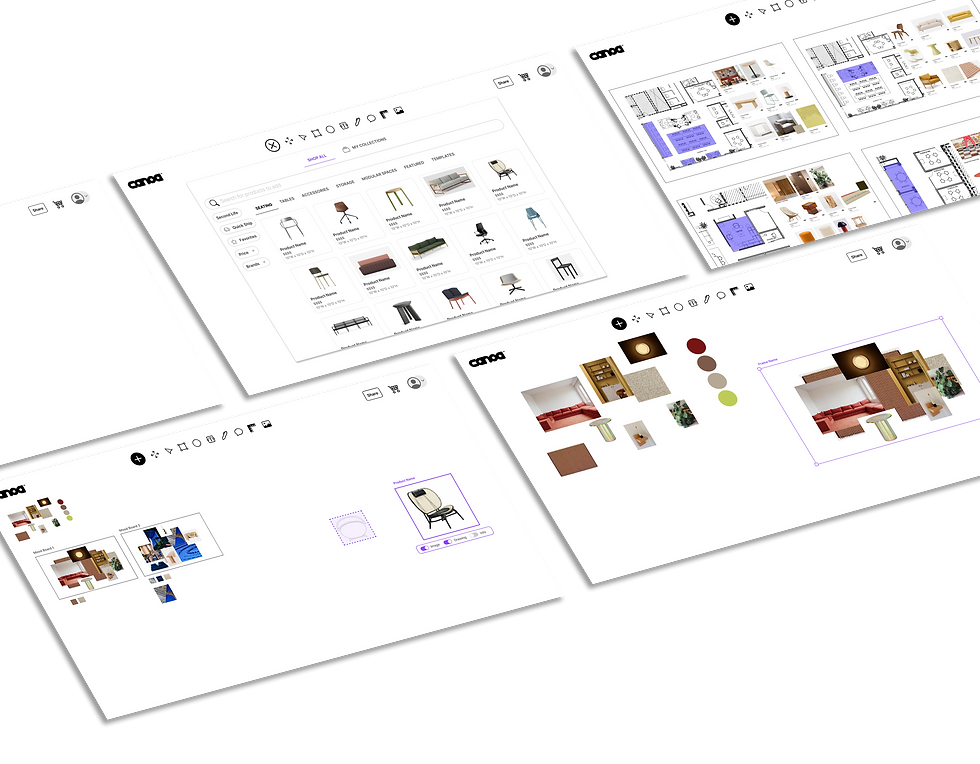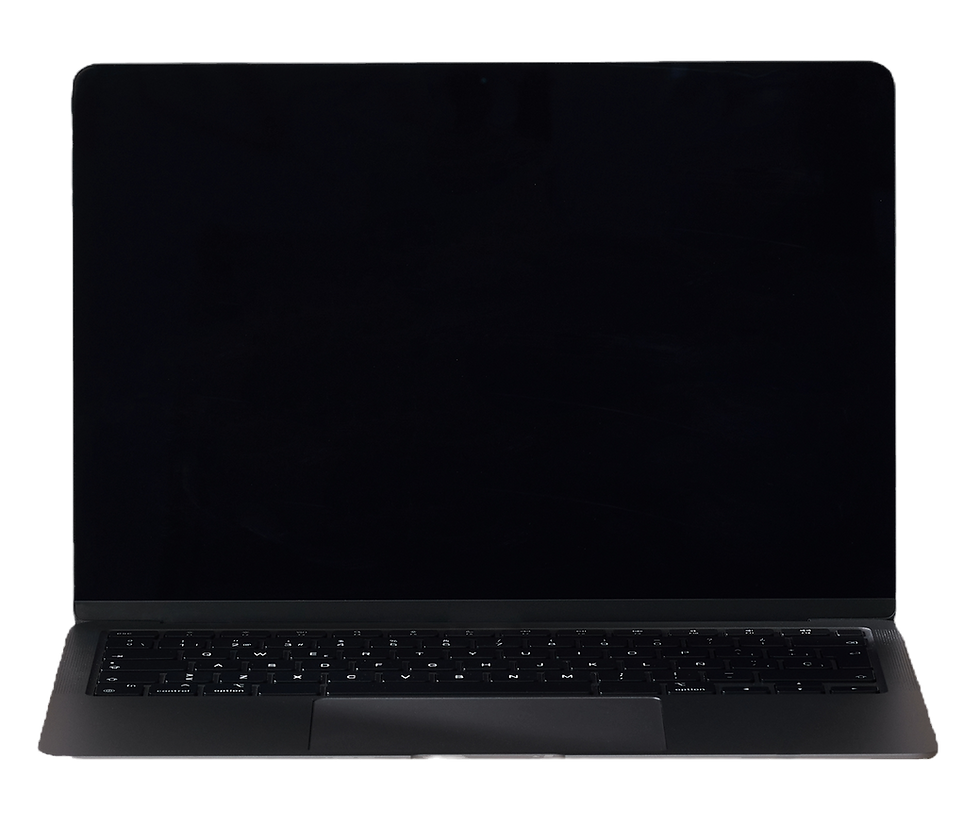Results in Metrics
5x
Increase in sign ups
3x
Increase in average individual user session time
70%
of existing users create more than one canvas
4x
Increase in existing users inviting new users
The Canvas
A powerful design tool with an AI recommendation engine to help designers create mood boards, layouts, and more.


The Problem
Up until today interior designers use a myriad of tools to get inspiration, create mood boards, and layout their designs. There no one tool that could take you from concept design to specification.
Goals
All-in-one Design Platform
AI-Powered Image Recognition
Content Suggestions and Inspirations
CAD Tool Capabilities for Specifications

Design Process

Research - Define
Ideate - Design
Iterate - Test
My process can vary with the scale of the project, but is consistently a systematic approach that involves understanding user needs, creating thoughtful designs, and refining solutions through continuous testing and feedback loops.
Test
Iterate
Ideate
Define
Discover
50% of users ignored the gridlines or found them confusing when uploading their own floor-plan.
80% of users were found the the toolbar helpful but 60% of that 80% wanted more functionality.
90% of users didn't use the Zones or Context tabs at all.
65% of users wanted to be able to collapse the side panel.

I started with competitive research, cross referencing what the most popular design platforms for a basic toolbar. I also knew part of the requirements would be incorporating similar capabilities to those of CAD tools.
Discovery
We already had data/user feedback on our existing layout tool, which gave us a baseline understanding on what was useful to bring to this new "hybrid tool":
I also conducted user interviews with a group we called the "design cohort" which was mostly comprised of interior designers from both small and large companies. We first asked initial questions to guide our discovery such as:
What mediums do you use to design?
Where do you get inspiration/where do you start?
Miro
Illustrator
Photoshop
Figma
Design Books (Physical)
Design
Along with the general feature set of a standard design tool, the Canvas was going to have a few key unique features:
A data-rich catalog of products hosted on the platform
AI recommendation engine
Mood boards, scaled layouts, and product schedules in the same place







I used my research and these requirement to create low-fi mocks with a toolbar that I reviewed and tweaked with the Head of Product and Product Lead.
_edited.png)
_edited.png)

_edited.png)
_edited.png)
90% of users liked that it was an infinite canvas and that you could be as "messy" as you chose to be, while having an area for more organized "presentation views".
70% of the users appreciated being able to have scaled drawings and images of the same product imported, but 80% of that 70% didn't want the 1:1 relationship, and wanted to be able to instead toggle between states.
95% of the users found the idea of a project schedule with data helpful (especially when working with their own clients), but only 5% of those users found the actual "cart" pertinent to their role (this was a sunset feature as Canoa removed it's commerce feature before the canvas officially launched).
95% of users were confused about where to start with the blank canvas, and wanted to drag on their own images to upload them.
After working through sketches and mocks, I used Figma to create dynamic components for a prototype that we had the design cohort test in follow-up interviews. We received consistent and helpful feedback that altered our priorities and design:




Release
After we built the key features needed for our MVP, we
released a Beta version.
At this point, I was working with the Product Lead and developers working on the product to continuously modify and add features such as:
- AI recommendation engine
- Background removal
- Sharing/Collaboration
- A homepage for multiple canvases
I also helped Marketing by creating multiple promotional videos for our social accounts, such as the one above and below.

As we removed the "cart" aka E-commerce experience, we needed to find a way to keep suppliers with accounts engaged. We kept the ability to add a project schedule with accurate data including lead times and price.
On top of this, we highlighted brands/brand collaborations on our social accounts. I was personally in charge of creating promotional videos for our existing brands.
Reflection

In an era where technology is reshaping industries, it's essential for us to recognize the potential for collaboration between human creativity and AI innovation.
Though I did not have a background in interior design, I have used many tools to aid my graphic and web design. I am consistently comparing the most efficient, useful, and user friendly tools. I was excited to drive the design of a tool that would allow a type of designer to streamline their process.
Furthermore, with my educational background in Human-Machine interaction, I was eager to design not only a design tool but an AI-aided design tool. With its power of data-driven insights and computational capabilities, AI has endless potential to not replace human design, but enhance it.